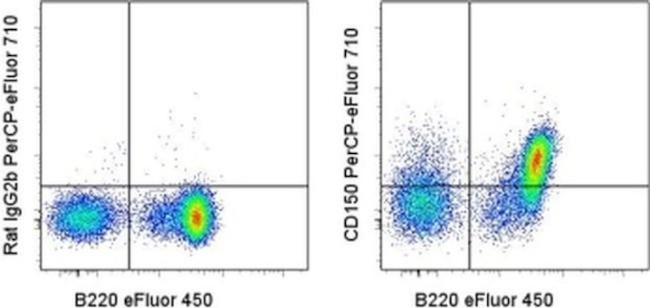Search Thermo Fisher Scientific
Invitrogen
CD150 Monoclonal Antibody (mShad150), PerCP-eFluor™ 710, eBioscience™
This Antibody was verified by Cell treatment to ensure that the antibody binds to the antigen stated.
FIGURE: 1 / 7
CD150 Antibody (46-1502-82) in Flow

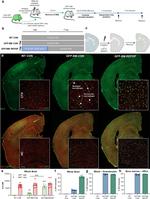
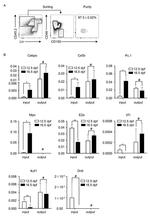
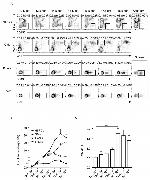

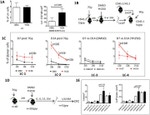
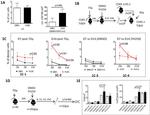
Product Details
46-1502-82
Species Reactivity
Published species
Host/Isotype
Recommended Isotype Control
Class
Type
Clone
Conjugate
Excitation/Emission Max
Form
Concentration
Purification
Storage buffer
Contains
Storage conditions
Shipping conditions
RRID
Product Specific Information
Description: The mShad150 monoclonal antibody reacts with mouse CD150, an ~70 kDa transmembrane glycoprotein also known as Signaling Lymphocyte Activation Molecule (SLAM). CD150 is expressed by T cells, in particular Th1, and B cells; this expression is rapidly upregulated upon activation. Immature thymocytes and dendritic cells also express this antigen. Signaling through SLAM in T cells induces proliferation and augmentation of the interferon-gamma response. Furthermore, SLAM is thought to play a role in adhesion between the T cell and antigen-presenting cell. The mShad150 antibody has been reported to also stain the CD150+CD244-CD48-CD41- population of pluripotent hematopoietic stem cells.
Applications Reported: This mShad150 antibody has been reported for use in flow cytometric analysis.
Applications Tested: This mShad150 antibody has been tested by flow cytometric analysis of mouse splenocytes. This can be used at less than or equal to 0.125 µg per test. A test is defined as the amount (µg) of antibody that will stain a cell sample in a final volume of 100 µL. Cell number should be determined empirically but can range from 10^5 to 10^8 cells/test. It is recommended that the antibody be carefully titrated for optimal performance in the assay of interest.
PerCP-eFluor® 710 can be used in place of PE-Cy5, PE-Cy5.5 or PerCP-Cy5.5. PerCP-eFluor® 710 emits at 710 nm and is excited with the blue laser (488 nm). Please make sure that your instrument is capable of detecting this fluorochrome. For a filter configuration, we recommend using the 685 LP dichroic mirror and 710/40 band pass filter, however the 695/40 band pass filter is an acceptable alternative.
Our testing indicates that PerCP-eFluor® 710 conjugated antibodies are stable when stained samples are exposed to freshly prepared 2% formaldehyde overnight at 4°C, but please evaluate for alternative fixation protocols.
Excitation: 488 nm; Emission: 710 nm; Laser: Blue Laser.
Filtration: 0.2 µm post-manufacturing filtered.
Target Information
CD150 (SLAM, Signaling Lymphocyte Activation Molecule) belongs to the immunoglobulin gene superfamily, and is involved in T cell stimulation. SLAM is constitutively expressed on peripheral blood memory T cells, T cell clones, immature thymocytes, and a proportion of B cells, and is rapidly induced on naive T cells after activation. Activated B cells express the membrane bound form, the soluble form and the cytoplasmic isoforms of SLAM. It is suggested that signalling through homophilic SLAM-SLAM binding during B to B and B to T cell interactions enhances the expansion and differentiation of activated B cells. Reports suggest that the extracellular domain of CD150 is the receptor for the measles virus and acts as a co-activator on T cells and B cells. Moreover, CD150 is thought to interact with SH2D1A and with PTPN11 via its cytoplasmic domain. Mutations CD150 gene may be associated with X-linked lympho-proliferative disease (XLP).
For Research Use Only. Not for use in diagnostic procedures. Not for resale without express authorization.
How to use the Panel Builder
Watch the video to learn how to use the Invitrogen Flow Cytometry Panel Builder to build your next flow cytometry panel in 5 easy steps.
Bioinformatics
Protein Aliases: CD150; CD150 antigen; signaling lymphocyte activation molecule; Signaling lymphocytic activation molecule; SLAM family member 1
Gene Aliases: 4933415F16; AA177906; CD150; CDw150; ESTM51; IPO-3; Slam; Slamf1
UniProt ID: (Mouse) Q9QUM4
Entrez Gene ID: (Mouse) 27218

Performance Guarantee
If an Invitrogen™ antibody doesn't perform as described on our website or datasheet,we'll replace the product at no cost to you, or provide you with a credit for a future purchase.*
Learn more
We're here to help
Get expert recommendations for common problems or connect directly with an on staff expert for technical assistance related to applications, equipment and general product use.
Contact tech support
